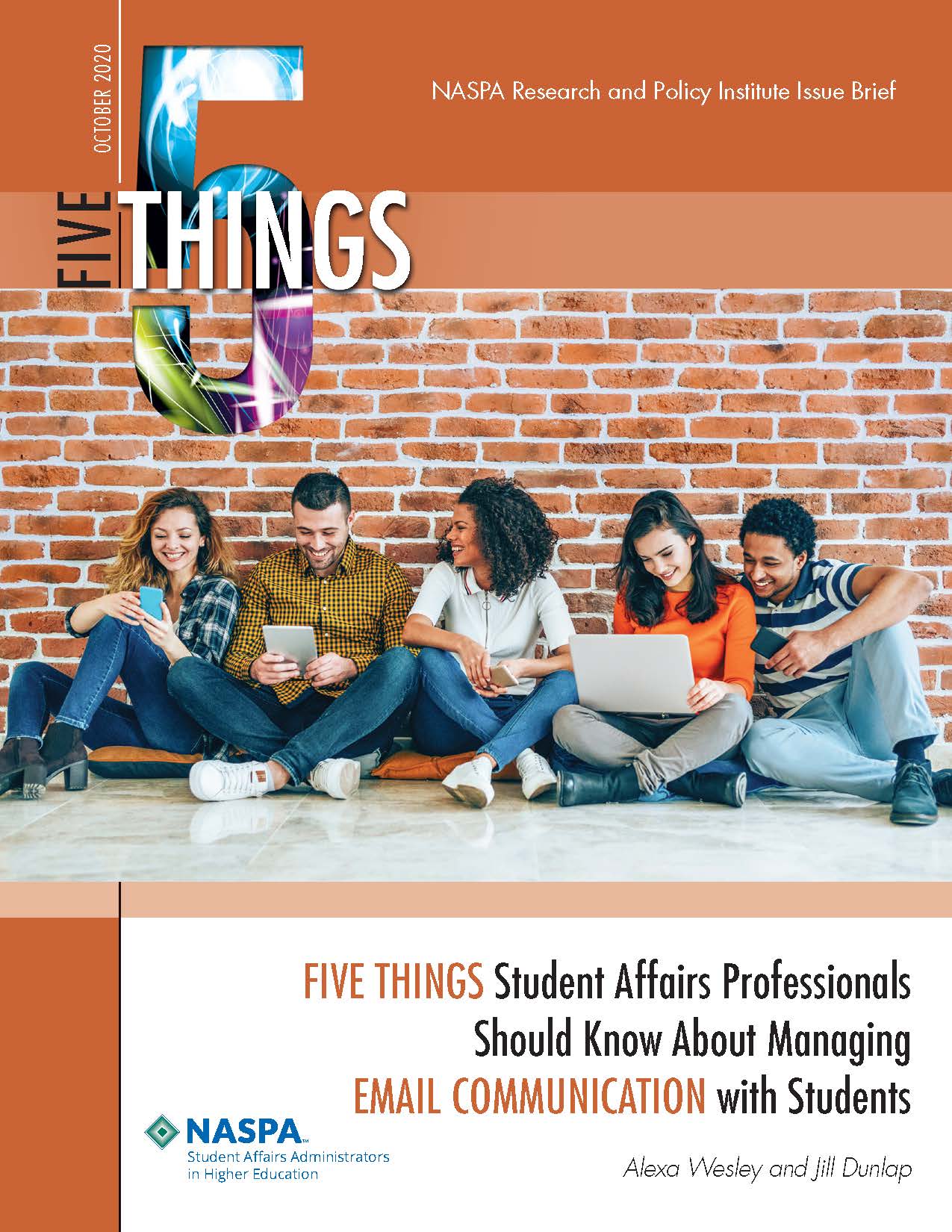Research Brief: Email Communication to Students
Student Success Student Affairs Fundraising and Communications AVP or "Number Two" Mid-Level Senior Level VP for Student Affairs
October 19, 2020
Jill Dunlap and Alexa Wesley of NASPA’s Research and Policy Institute spent the last year investigating how student affairs divisions are—or should be—adapting their student email communication strategy to match the expectations and demonstrated behaviors of students.
 Even before the COVID-19 pandemic significantly shifted the higher education landscape, institutions have viewed emails to students as a cornerstone of their communication planning. As schools transitioned to a more virtual environment in recent months, the reliance on a digital-first communication strategy has only strengthened.
Even before the COVID-19 pandemic significantly shifted the higher education landscape, institutions have viewed emails to students as a cornerstone of their communication planning. As schools transitioned to a more virtual environment in recent months, the reliance on a digital-first communication strategy has only strengthened.
In their recently released 5 Things research brief, Dunlap and Wesley summarized the insights they gleaned from interviews with NASPA members who had communications in their professional titles from 14 institutions across the country.
The study’s key findings are:
1. Email governance structure should match the culture of the institution
Your student email strategy must align with the realities of your current institutional climate. Decisions and policies regarding who can send emails to students, when emails are sent, and who controls the content must strike a balance between being centralized and consistent without being overly bureaucratic or lacking personalization.
2. Increase awareness of communication strategy among students, faculty, and staff
Simply having a communication/email strategy in place is not enough. Sharing your plan with fellow student affairs staff, colleagues from other units, and incorporating faculty into the mix allows these vital campus partners to buy into and support your efforts. Additionally, explicitly educating students on the importance of checking their school email regularly should be part of your planning.
3. Use data to improve email communication practices
While anecdotes and individual perception may be helpful when initially developing a communication strategy, real data—such as open rates and click throughs—should drive your decision-making. While many campuses struggle to implement a streamlined and comprehensive method to collect and share email analytics, schools that gather even the most basic data tend to develop effective email strategies.
4. Email should serve as one tool in a larger communications toolbox
Determine what types of messages are best suited for email, text messages, digital signage, printed materials, or other formats. While some of the interviewees feel that “email is dead” and favor text messages to students, others said that students prefer to keep school information in their inboxes and out of their texts.
5. Technology can improve email communications efforts, but the number of tools needs to be streamlined to reduce confusion
Although using a robust email management tool can help when creating, distributing, and analyzing email communications to students, having too many systems to maintain and learn can be counterproductive. Balancing between a slick email system that has all the bells and whistles with actually being able to use those functions regularly should be a key factor when deciding which system to use or whether or not a new system is needed at all.
The full brief is available to all NASPA members here.